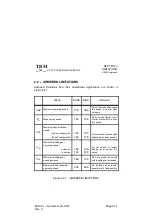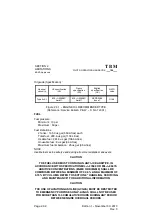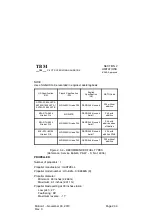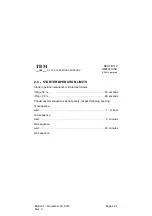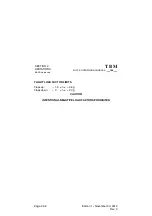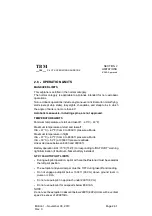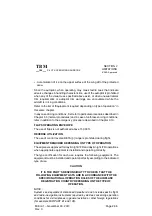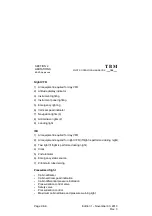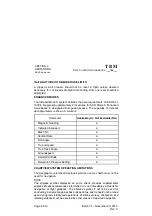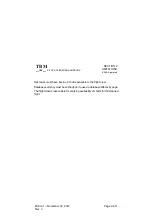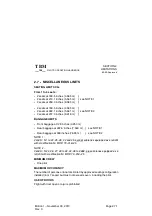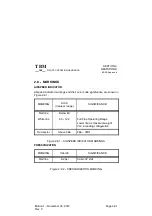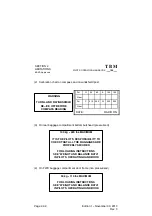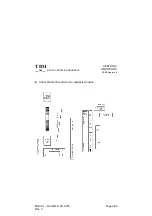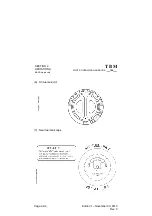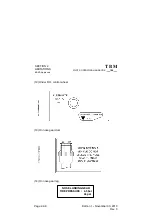
SECTION 2
LIMITATIONS
EASA Approved
TBM
700
PILOT’S OPERATING HANDBOOK
Page 2.6.5
Edition 1 -- November 30, 2010
Rev. 0
-- Accumulation of ice on the upper surface of the wing aft of the protected
area.
Since the autopilot, when operating, may mask tactile cues that indicate
adverse changes in handling characteristics, use of the autopilot is prohibited
when any of the visual cues specified above exist, or when unusual lateral
trim requirements or autopilot trim warnings are encountered while the
aircraft is in icing conditions.
Refer to the list of ”Equipement required depending on type of operation” in
this same chapter.
In any case of icing conditions, first refer to particular procedures described in
Chapter 4.5 (normal procedures) and in case of unforeseen icing conditions,
refer in addition to the emergency procedure described in Chapter 3.13.
FLAPS OPERATING ENVELOPE
The use of flaps is not authorized above 15 000 ft.
REVERSE UTILIZATION
The use of control reverse BETA (
β
) range is prohibited during flight.
EQUIPMENT REQUIRED DEPENDING ON TYPE OF OPERATION
The airplane is approved for day & night VFR and day & night IFR operations
when appropriate equipment is installed and operating correctly.
The type certification for each use requires the following equipment. The
equipment must be installed and operate perfectly according to the indicated
type of use.
CAUTION
IT IS THE PILOT’S RESPONSIBILITY TO CHECK THAT THE
FOLLOWING EQUIPMENT LISTS ARE IN ACCORDANCE WITH THE
SPECIFIC NATIONAL OPERATION RULES OF THE AIRPLANE
REGISTRATION COUNTRY DEPENDING ON THE TYPE OF
OPERATION.
NOTE :
Systems and equipment mentioned hereafter do not include specific flight
and radio--navigation instruments required by decree concerning operation
conditions for civil airplanes in general aviation or other foreign regulations
(for example FAR PART 91 and 135).




